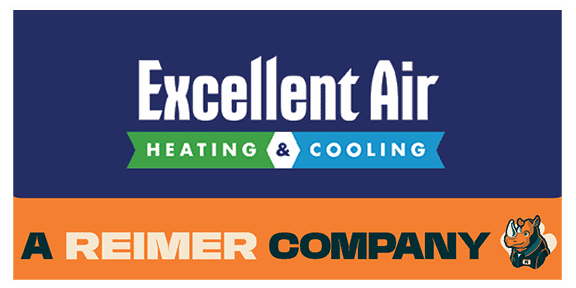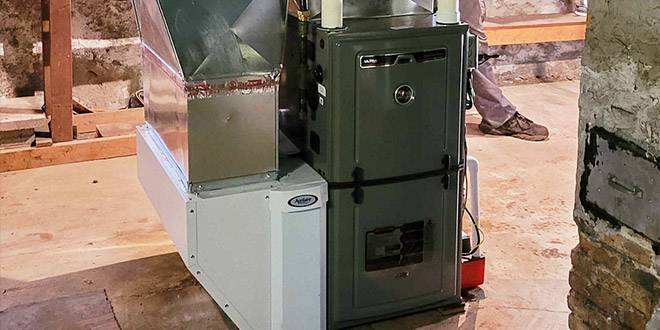Are you a homeowner in Rochester or the surrounding areas seeking learn the best types of heating system? This blog post explores various types, focusing on efficiency, comfort, and suitability for New York’s diverse climate, guiding you to the perfect choice for your home.
Understanding Your Home Heating System Options in New York
When it comes to heating your home in Rochester, NY, and its surrounding areas, the key factors to consider are efficiency, comfort, and how well the system adapts to our region’s unique climate. Let’s break down the most popular heating systems, detailing their features and helping you make the best decision for your home.
Furnaces: The Popular Choice
Furnaces, a staple in residential home heating systems, are favored for their ability to distribute heated air through a network of ducts efficiently. They come in various forms to suit different needs and preferences:
Natural Gas Furnaces
Natural Gas Furnaces stand out for their efficiency and strong, consistent heat output, making them ideal for colder climates. However, they require access to a natural gas line, which might be a limitation in some areas.
Electric Furnaces
Electric resistance heating systems are known for their simplicity and safety. Their ease of installation makes them a go-to choice for many, but they can be less energy-efficient, potentially leading to higher electricity bills.
Oil Furnaces
Oil Furnaces are an excellent option in regions without natural gas. These furnaces provide a high BTU output for robust heating but necessitate a storage tank and consistent oil deliveries, which might add to the maintenance.
Single-Stage Furnaces
Single-Stage Furnaces are budget-friendly and straightforward but may result in uneven heating due to their all-or-nothing operation.
Two-Stage Furnaces
Two-Stage Furnaces improve upon the single-stage design by offering variable heating outputs. This results in enhanced energy efficiency and more stable temperature control.
Modulating Furnaces
Modulating Furnaces represent the pinnacle of furnace technology with their ability to fine-tune heat output, ensuring maximal efficiency and uniform heating throughout your home.
Boilers: Radiant Heating Systems
Boilers and floor radiant heating systems offer an alternative to traditional forced-air systems, providing heating via hot water or steam. Radiant floor heating involves installing pipes or electric heating elements beneath the floor surface, radiating heat upwards, and creating a comfortable and even warmth throughout the room:
Combi Boiler
Combi Boilers are a compact and energy-efficient solution, especially suited for smaller homes. While they efficiently manage space heating and hot water needs, their capacity may be stretched thin in homes with multiple bathrooms.
System Boilers
System Boilers, requiring a separate hot water cylinder, are more appropriate for households with greater hot water demands, typically homes with multiple bathrooms.
Conventional Boilers
Conventional Boilers, the most traditional form, require both a hot water cylinder and a water tank. They are well-suited for homes with low water pressure or multiple water usage points.
Heat Pumps: Efficient and Versatile
Heat pumps guide, serving dual functions as a heater and air conditioner, are increasingly popular due to their versatility and efficiency:
Air-Source Heat Pumps
Air-Source Heat Pumps are celebrated for their energy efficiency. While they are highly effective in moderate climates, their performance may dip in extremely cold weather.
Ground-Source Heat Pumps
Ground-Source Heat Pumps (or geothermal systems) offer consistent heating by tapping into the stable temperatures underground, albeit with a more complex and invasive installation process.
Hybrid Heat Pumps
Hybrid Heat Pumps ingeniously combine the efficiency of a heat pump with the reliability of a traditional boiler, automatically switching between the two based on temperature demands and efficiency.
Ductless Mini-Split Systems: Flexible Heating Solutions
Ductless mini-split systems and baseboard heaters are revolutionizing heating and cooling in modern homes. These systems allow for targeted temperature control in specific areas or rooms without the need for extensive ductwork. They are an excellent choice for additions to homes, new constructions, or in scenarios where installing ducts is impractical.
While they offer remarkable energy efficiency and flexibility, the initial installation cost might be higher than traditional heating systems. However, this investment can lead to long-term savings and improved comfort in your living spaces.
What Is The Best Heating System for a House in The US Northeast?
In the Northeast, where winters can be particularly harsh, selecting the right heating system is not just about comfort but also about efficiency and adaptability to the unique climate. Let’s explore the options that stand out for their performance and practicality in this region.
Climate-Specific Considerations
Cold Tolerance
Systems that can operate efficiently even in extremely low temperatures are vital. While many heating systems lose efficiency as it gets colder, some are designed to perform well even in harsh winter conditions.
Energy Efficiency
Due to the prolonged heating season, energy efficiency becomes a critical factor. Systems that deliver more heat per unit of energy consumed can lead to significant cost savings over time.
Regional Preferences and Availability
Fuel Availability
In the Northeast, natural gas and heating oil are widely available. This availability makes gas and oil furnaces a practical choice, especially considering the high efficiency of modern models.
Hybrid Systems
Given the varying temperatures throughout the season, hybrid systems that combine a heat pump with a gas furnace can offer the flexibility and efficiency needed. These systems use the heat pump in milder conditions and switch to the furnace in extreme cold.
Advanced Technologies for Enhanced Performance
Modulating and Two-Stage Furnaces
Modern furnaces that can modulate their output or operate at two stages are ideal. They provide a consistent temperature by adjusting their heating output to the exact needs of the home, which is beneficial during fluctuating winter temperatures.
Smart Thermostats and Zoning
Systems equipped with smart thermostats offer better control and efficiency. Zoning capabilities allow different areas of the house to be heated to different temperatures, which is particularly useful in larger homes or those with unused spaces.
Insulation and Home Efficiency
Complementary Measures
A highly efficient heating system can be further complemented by ensuring the home is well-insulated. Good insulation reduces heat loss, meaning the heating system doesn’t have to work as hard, thereby increasing overall efficiency and comfort.
How to Choose the Best Heating System for New York Homes
In the Northeast, the best heating system is one that combines efficiency, reliability in cold weather, and adaptability to different temperature ranges. Gas and oil furnaces, particularly modern, modulating, or two-stage models, are a solid choice, while hybrid systems offer an excellent balance of efficiency and performance in varying weather conditions. Coupled with smart technology and a well-insulated home, these systems can provide the optimal heating solution for the challenging Northeastern climate.
Ready for Warmth? 🔥😊
Embrace the winter in Rochester, NY, and the surrounding areas with confidence. Let Excellent Air Heating & Cooling be your guide to selecting the perfect heating system for your home. Our expertise and wide range of options ensure your comfort and peace of mind. Contact us today, and let’s make your home a cozy haven this winter!




